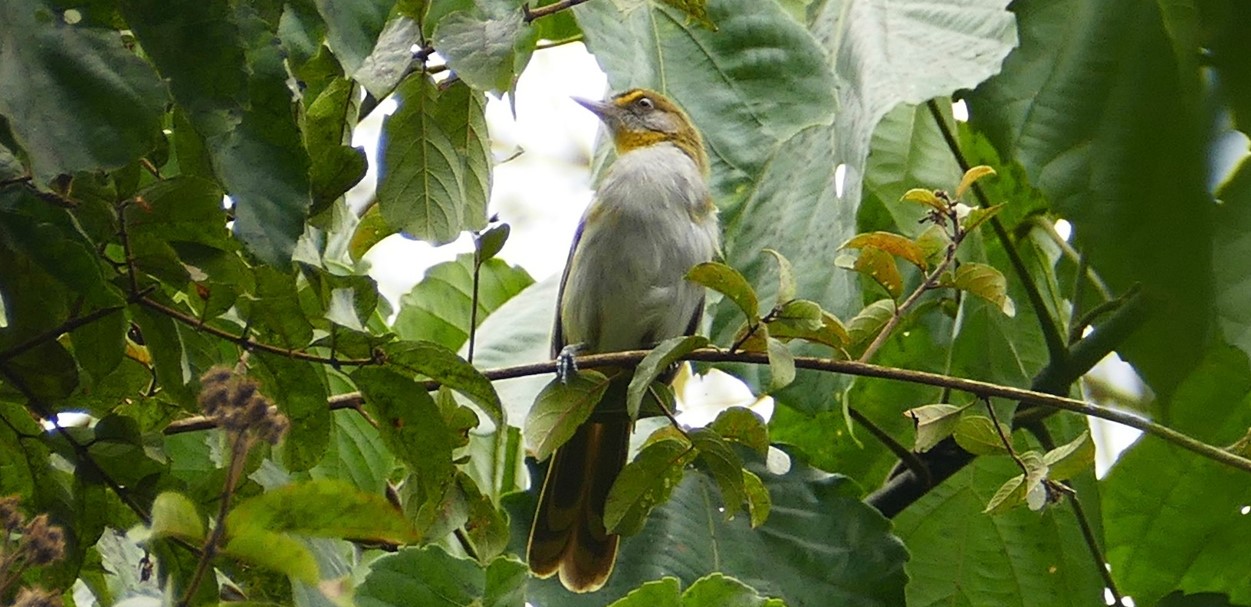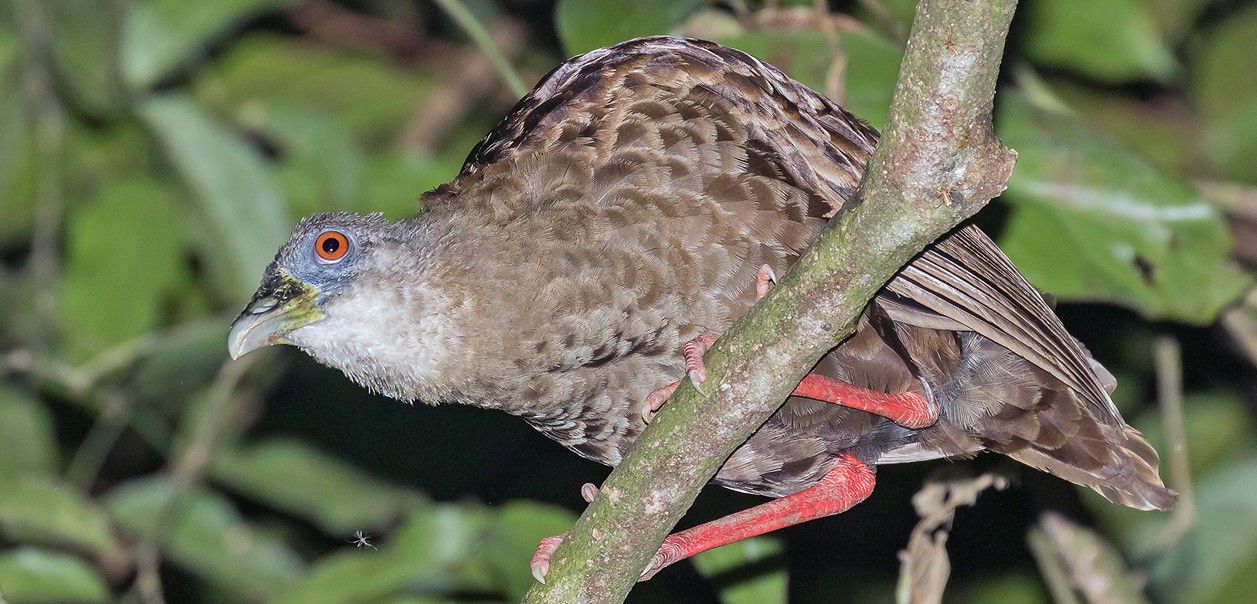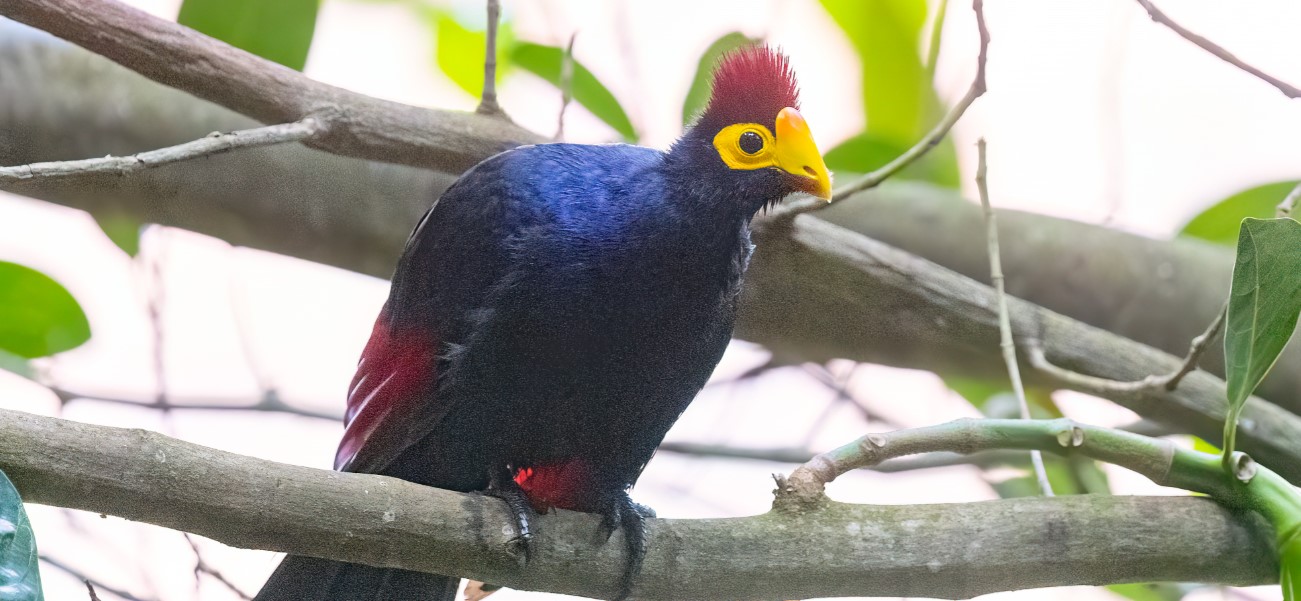
Birding in Semuliki National Park
Birding in Semuliki National Park: Semuliki National Park boasts over 441 bird species, which is 40% of all bird species recorded in Uganda. Among these, 216 species are forest birds. Semuliki is home to 46 Guinea-Congo biome bird species, which cannot be found elsewhere in East Africa,131 of these species are recorded within the park. The park is situated in a remote corner of southwestern Uganda. It covers an area of lush rainforest and is one of the top birding destinations in the country. From the Sempaya to Ntandi trails, Semuliki offers excellent birdwatching opportunities.
Key bird species in Uganda to look out for include the Eastern Long-tailed (White-crested) Hornbill, Dwarf (Red-billed Dwarf) Hornbill, and the vibrant Eastern Piping and the Eastern Little Hornbill. Don’t miss the chance to spot the elusive Yellow-throated Nicator, the majestic Great Blue Turaco, and the striking Ross’s Turaco. Semuliki National Park is accessible through the western tourism circuit, which includes other national parks in Uganda like Mt. Rwenzori and Kibale. Birders who venture here are rewarded with some of Africa’s finest forest birdwatching experiences. Lucky birders might spot some of the rarest species, including the Congo Serpent Eagle, Long-tailed Hawk, Nkulengu Rail, Black-casqued Hornbill, Black-winged Oriole, the recently sighted Golden-naped Weaver, Crested, Red-bellied and Blue-billed Malimbe, Chestnut-breasted and the very rare Pale-fronted Nigrita, the distinctive Capuchin Babbler and the very attractive Rufous-bellied Helmetshrike. Keep your eyes and ears open for the enchanting calls and vibrant plumage. While birdwatching, you might also encounter other fascinating creatures, such as forest elephants, buffaloes, and primates. Semuliki National Park is a treasure trove for bird enthusiasts, where every rustle of leaves might reveal a new feathered wonder.
Bird species found in Semuliki National Park Uganda.
Semuliki National Park in Uganda is a haven for birdwatchers, boasting an impressive diversity of avian species. Let’s explore some of the fascinating bird species in Uganda found within this lush rainforest and their behavioural characteristics:
- Nkulengu Rail:
Behaviour: The Nkulengu Rail is a secretive bird that prefers to stay hidden in dense vegetation. It occasionally emerges to forage for insects and small invertebrates. This unique bird is a sight to behold when birding in Semuliki National Park
Distinctive Features: Look for its chestnut-brown plumage and white throat.

- Lyre-tailed Honeyguide: Behaviour: The Lyre-tailed Honeyguide is known for its long, lyre-shaped tail. It feeds on beeswax and bee larvae, often leading humans and other animals to beehives.
Distinctive Features: Its striking tail and honey-seeking behaviour make it a unique sighting.
- Congo Serpent Eagle: Behaviour: The Congo Serpent Eagle is a raptor that glides gracefully through the forest canopy. It preys on snakes and other small vertebrates. Its is a rewarding sight when birding in Semuliki National Park.
Distinctive Features: Look for its dark plumage and piercing yellow eyes.
- Black-casqued (wattled) Hornbill:
Behaviour: The Black-casqued Hornbill is a charismatic bird often seen perched on tree branches. It feeds on fruits, insects, and small animals. Distinctive Features: Its large bill and black facial wattles are key identifiers.
- Long-tailed Hawk: Behaviour: The Long-tailed Hawk soars elegantly above the forest, hunting for small mammals and birds. Distinctive Features: Its long tail and swift flight make it stand out.
- Yellow-throated Nicator: Behaviour: The Yellow-throated Nicator is an active forager, hopping through the foliage in search of insects and berries. Distinctive Features: Its bright yellow throat and olive-green plumage are eye-catching.
- Piping Hornbill: Behaviour: The Piping Hornbill is a noisy bird that communicates with loud calls. It feeds on fruits, insects, and small animals.
Distinctive Features: Its large bill and black-and-white plumage are characteristic.
- Great Blue Turaco: Behaviour: The Great Blue Turaco is a large, striking bird with vibrant blue and green plumage. It often moves through the forest canopy in pairs or small groups. This is a rewarding sight while birding in Semuliki National Park.
Distinctive Features: Its bright blue wings, red eye ring, and long tail feathers make it unmistakable.
- Ross’s Turaco: Behaviour: The Ross’s Turaco is another turaco species found in Semuliki. It feeds on fruits and insects. Distinctive Features: Look for its crimson-coloured wings and green body.
- Ross’s Turaco:
Behaviour: The Red-billed Dwarf Hornbill is a tiny hornbill species that flits among the branches. It feeds on insects and small fruits.
Distinctive Features: Its small size, red bill, and black-and-white plumage set it apart.
- Yellow-spotted Barbet: Behaviour: The Yellow-spotted Barbet is a vocal bird that announces its presence with loud calls. It feeds on fruits and insects. Distinctive Features: Look for its yellow spots on the head and neck.
- Black-casqued (Wattled) Hornbill:
Behaviour: The Black-casqued (Wattled) Hornbill is a large, noisy bird that forages in the treetops. It feeds on fruits, insects, and small animals.
Distinctive Features: Its massive bill, black casque, and wattles make it stand out.
- White-throated Blue Swallow: Behaviour: The White-throated Blue Swallow is an agile flyer that catches insects on the wing. It often forms flocks during migration.
Distinctive Features: Its iridescent blue plumage and white throat are eye-catching.
Remember, Semuliki National Park offers not only these sought-after species but also a symphony of calls, fluttering wings, and hidden wonders waiting to be discovered.
Birding Trails in Semuliki National Park Uganda.
Semuliki National Park offers a captivating birding experience, where the lush rainforest echoes with the melodies of feathered inhabitants. Let’s explore the birding trails within this pristine wilderness:
- Kirumia Trail
Kirumia Trail when birding in Semuliki National Park in Uganda is a birdwatcher’s paradise. This 13-kilometer trail winds through the heart of the forest, leading toward the Semuliki River. Kirumia Trail is home to a variety of bird species. As you walk, keep your eyes peeled for feathered treasures. The Black and White Casqued Hornbill, with its striking appearance, can be spotted perched on trees alongside the trail. Other avian residents include the Piping Hornbill, White-crested Hornbill, Red-billed Dwarf Hornbill, Great Blue Turaco, and Ross’s Turaco. Not only do birds thrive here; a diverse array of butterflies breed along the trail.
The forest canopy provides an ideal habitat for both birds and butterflies, creating a vibrant ecosystem. The trail takes approximately 8 hours to complete, starting at 8 a.m. from Kirumia. Kirumia is conveniently located about 8 kilometres from the park headquarters in Ntandi. While birdwatching, you might also encounter other fascinating creatures. Semuliki National Park is home to 63 mammal species, including forest buffalos, leopards, hippos, and elephants. Keep an eye out for the elusive Pygmy Flying squirrel and the graceful bay duiker. After your birding adventure, consider visiting the famous hot springs within the park. The water is so hot that it can even cook eggs and plantains.
- Red-monkey Trail
Red Monkey Trail when birding in Semuliki National Park in Uganda is a captivating route for birdwatchers. This 11-kilometer trail winds around the park’s boundary, leading you toward the Semuliki River. Red Monkey Trail offers a chance to encounter a diverse array of avian wonders. Keep your eyes peeled for the White-crested Hornbill, Red-billed Dwarf Hornbill, and the vibrant Piping Hornbill. Rare sightings might include the elusive Yellow-throated Nicator, the majestic Great Blue Turaco, and the striking Ross’s Turaco. Butterflies and Forest Canopy: Not only birds thrive here; a variety of butterflies breed along the trail. The forest canopy provides an ideal habitat for both birds and butterflies, creating a vibrant ecosystem.
The trail takes approximately 6 hours to complete, starting at 8 a.m. from Kirumia. Kirumia is conveniently located about 8 kilometres from the park headquarters in Ntandi. While birdwatching, you might also encounter other fascinating creatures. Semuliki National Park is home to forest elephants, buffaloes, leopards, black and white colobus monkeys, grey-cheeked mangabeys, chimpanzees, and more.
- Nyuburogo Gorge Trail
When birding in Semuliki National Park, Nyuburogo Gorge Trail in Semuliki is a captivating route for birdwatchers. This trail winds through the forest, revealing its hidden treasures. Nyuburogo Gorge Trail offers a chance to encounter a diverse array of avian wonders. As you walk, keep your eyes peeled for the Yellow-throated Nicator, Red-necked Falcon, and the striking Black-billed Barbet. The vibrant Great Blue Turaco, Ross’s Turaco, and the elusive White-crested Hornbill might grace your path. Not only do birds thrive here; a variety of butterflies flutter among the leaves. The forest canopy provides an ideal habitat for both birds and butterflies, creating a vibrant ecosystem
The trail can be explored in the morning or afternoon, depending on your itinerary. Good bird guides will take you to the best areas where birds concentrate. While birdwatching, you might also encounter other fascinating creatures. Semuliki National Park is home to various mammals, including primates like chimpanzees, as well as hot springs and diverse vegetation.
- Sempaya Nature Trail when birding in Semuliki National Park?
Sempaya Nature Trail in Semuliki National Park is a delightful choice for birdwatchers and nature enthusiasts. The Sempaya Nature Trail stretches for approximately 8 kilometres within the park.It winds through the heart of the forest, revealing its hidden treasures. Birders will be thrilled by the diverse bird species in Semuliki that call this trail home.
Keep your binoculars handy to spot bird species in Uganda such as the Yellow-throated Nicator, the striking Great Blue Turaco, and the colourful Ross’s Turaco. Beyond birds, the trail hosts a variety of butterflies that breed in the forest canopy. Their vibrant colours add to the enchantment of their surroundings. The trail can be explored in the morning or afternoon, depending on your preference. Begin your adventure at 8 a.m. from the starting point. While birdwatching, keep an eye out for other fascinating creatures. Semuliki National Park is home to primates, hippos, and crocodiles.
The forest’s ambience is alive with the calls of exotic birds and the rustling of leaves.
What is the best time to go birding in Semuliki National Park Uganda?
The best time for birding in Semuliki National Park in Uganda is during the rainy season, which occurs from March to May and October to November. Here’s why this period is ideal for birding: During the rainy season, many bird species in Uganda, especially in Semuliki engage in breeding activities. This means you’ll have a higher chance of spotting birds as they display courtship behaviours, build nests, and care for their young. Migratory birds also arrive during this time, adding to the diversity of species. The population of birds in Semuliki National Park is higher during the rainy season due to the influx of migratory species.
More birds species in Uganda especially Semuliki are active, making it easier to observe and identify them. The rainforest is at its greenest during this time, providing excellent cover for birds. The dense foliage allows you to spot them as they move through the trees. The vibrant vegetation also attracts insects, which, in turn, attract insectivorous birds. Although it’s rainy, the temperatures are generally pleasant. You won’t have to endure extreme heat or cold. Birdwatching is more enjoyable when you’re comfortable.

